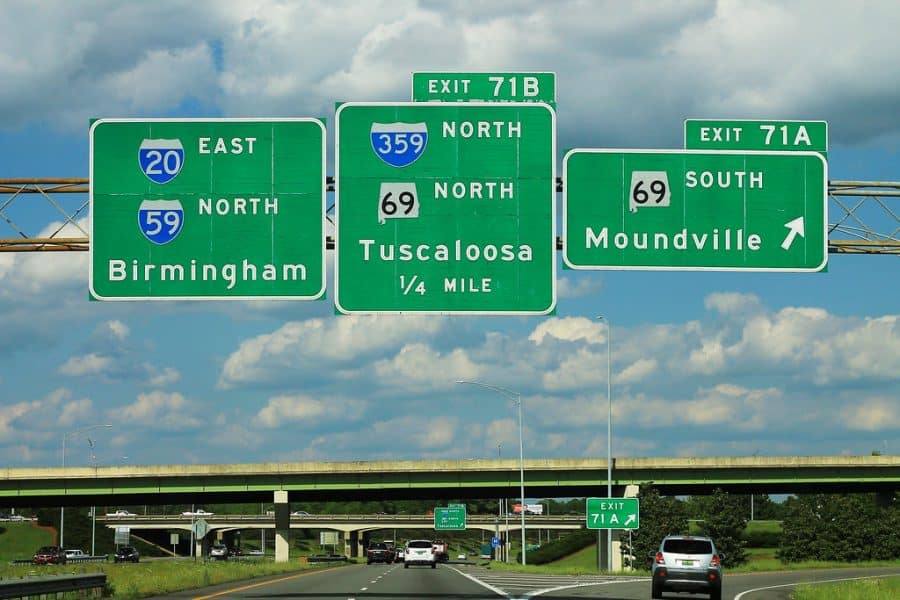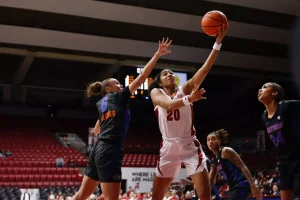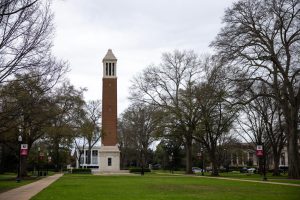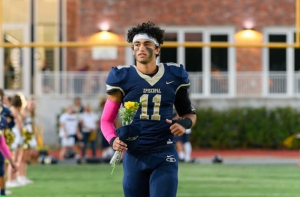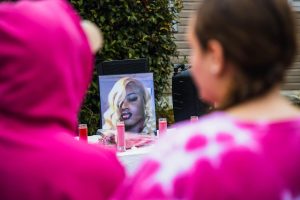Local advocates bring awareness to human trafficking
February 2, 2020
As January, Human Trafficking Prevention Month, comes to a close, UA students are advocating for human trafficking awareness. Since a major trafficking highway is in Tuscaloosa’s backyard, it’s important for students to stay informed and know how to recognize the signs.
When the topic of human trafficking comes up in conversation, many students fear they could be taken from any location at any time, especially if they are alone.
“There are significant misconceptions among students about what human trafficking is and what it looks like,” Emma Riley, a sophomore majoring in journalism, said. “It is definitely happening locally more than students are aware.”
Riley, who has conducted local research on the issue, explained that this is rarely the case. A victim’s entrance into the trade is often at a young age, where their stay is a result of manipulation and control and their trafficker is usually someone they know.
“Many times a bond of trust is formed between the victim and the perpetrator before the human trafficking starts,” Madilyn Warner, an Alabama resident and advocate for human rights, said.
According to an online article from the National Center for Biotechnology Information (NCBI), most cases begin with a young woman who is “economically or socially vulnerable.” In being approached by the trafficker, she is offered an enticing lifestyle or gifts she desires. Unknowingly, she accepts the offer and forms a relationship with her predator. Over time, the victim finds herself paying off debts she was unaware she had and performing favors out of feelings of guilt or fear, an illegal practice called “debt bondage.” This lifestyle becomes a cycle the victim is unable to escape without help.
NCBI also reports that global human trafficking is currently the fastest-growing trade in the criminal industry, while sex trafficking alone accounts for a global commerce of $32 billion. This massive industry requires an equally substantial passage for its product. Long roads and large amounts of people do not help the cause either.
“The fact that we can go 15 to 20 years of our lives without hearing about this issue shows how privileged we are and how lucrative the operation is,” said Warner.
This is especially shocking given how prevalent it is in our local Tuscaloosa community.
The No. 1 route for this ever-growing sex trade is a mere 10-minute drive from The University of Alabama’s campus. It is Interstate 20, and it is termed the “sex trafficking superhighway.”
There are countless stops along this 1,513-mile stretch of roadway on which people are trafficked every day.
“A day doesn’t go by that I don’t see 15-30 girls at these truck stops,” said one member of Truckers Against Trafficking in The WellHouse documentary “I-20: The Sex Trafficking Superhighway.”
Because UA students are in close proximity to this major trafficking corridor and universities are often a risk for high trafficking activity, students should be given an accurate understanding of human trafficking, how to protect themselves and how to identify the signs of it taking place.
“Lack of communal awareness or desire for change are where traffickers get their power,” said Ellie Novotny, a UA student and speaker on behalf of Bringing the Exploitation of Alabama Minors to a Stop (BEAMS).
BEAMS is a federally funded project dedicated to creating a statewide human trafficking initiative. One currently does not exist for any state in the U.S., so the establishment of one in Alabama would be incredible progress for the defense of human rights.
Novotny became an advocate when she stumbled across an article online she assumed was clickbait. She did not believe the headline reading that 47 people had been arrested under trafficking charges in Tuscaloosa. She began conducting her own research and realized the reality of the issue: that human trafficking is taking place closer to home than she expected.
“It’s a huge problem here in Tuscaloosa that isn’t talked about, especially among students on campus,” Novotny said.
Novotny and Warner did not become advocates because they were forced to learn about human trafficking in the classroom. They educated themselves and recognized the need to get involved in their communities. Their own curiosity led them to the reality of the severity of local human trafficking.
Awareness is the simplest form of advocacy that local organizations like The WellHouse, BEAMS and the West Alabama Human Trafficking Task Force want to produce among community members. From one person to the next, information will spread, and it can eventually cause the dismantling of one of the most disturbing industries in the world.
“The University of Alabama is a powerful place,” Novotny said. “That’s why it’s important for the students here to join the fight against human trafficking.”
For more information about human trafficking in the U.S., visit www.dhs.gov/blue-campaign/what-human-trafficking.



